|
Per the Oxford English Dictionary, "bangs" as a term for the fringe of hair lying over the forehead originated in the stables. Horses' tails were sometimes allowed to grow to a certain length, and then were cut off in an even, horizontal trim called a "bangtail." Racehorses were sometimes called bangtails. And Green's Dictionary of Slang suggests "bangtail" actually originated in Scotland, not the US. "Bangtail" was first applied to human hairstyles as early as 1844, but the OED cites the first use of "bang" as 1878. "Bang" meaning "abrupt or sudden" has been used in English since the late 18th century; more details here at Grammarphobia: Q: Why does the word “bangs” refer to a fringe of hair cut straight across the forehead? A: The use of “bangs” (or “bang”) for that short fringe of hair originated in the US in the 19th century, according to the Oxford English Dictionary. But the usage has its roots in “bangtail,” an equine term seen on both sides of the Atlantic. So let’s start our investigation in the stables. The word “bangtail” is defined in the OED as “a (horse’s) tail, of which the hair is allowed to grow to a considerable length and then cut horizontally across so as to form a flat even tassel-like end.” The dictionary notes that the term has also been used in Australia for cattle with tails cut that way, and in the US as slang for a horse, especially a race horse. The earliest citation for “bangtail” in Green’s Dictionary of Slang is from a Scottish journal, suggesting that the term may have first reared its head in the British Isles. Green’s cites an 1812 issue of the Edinburgh Review that mentions a stud horse named Bangtail, but the name surely came from an even earlier use of the term. Through a Google search we found a comic British story about fox-hunting, published in 1851, in which “bang-tail” appears least seven times in reference to tails as well as horses. The story, “Turning Out a Bagman,” by a writer signed “B.P.W.,” is about two London greenhorns who are on vacation and want to hire a pair of hunters. The showily groomed horses they hire are called “bang-tails,” and are described as having “such flowing bang-tails as at once stamped them in the eyes of our friends as ‘out-and-out’ thorough-breds.” The story is chockfull of slang (like “bagman” to mean “fox”), which may explain the repeated use of “bang-tail” instead of “horse.” Apparently it didn’t take long for “bang” to graduate from horse tails to human hair. We found an 1844 travel book, Revelations of Russia by Charles Frederick Henningsen, that mentions a man’s hair cut “somewhat in the fashion of a thorough-bred’s ‘bang-tail.’ ” In another travel book we came across an 1849 entry that describes a woman whose hair was braided in back and “cut in bang style” in front. The OED’s earliest citation for the human usage is from a letter written in 1878 by Frances M. A. Roe, author of Army Letters From an Officer’s Wife: “It had a heavy bang of fiery red hair.” (The “bang” was on a face mask in a shop window in Helena, in the Montana Territory.) Another American, William Dean Howells, also used the word in his book The Undiscovered Country (1880): “His hair cut in front like a young lady’s bang.” A Google search turned up a plural reference in an 1883 article from the New York Times. A Catholic priest, lecturing Sunday school children, “condemned the fashion of wearing ‘bangs’ in severe terms.” A matching adjective (as in “banged” hair) and verb (to “bang” or cut the front hair straight across) also emerged in the 1880s, according to citations in the OED. Here are a couple of examples: “He was bareheaded, his hair banged even with his eyebrows in front” (from the Century Magazine, 1882), and “They wear their … hair ‘banged’ low over their foreheads” (from Harper’s Magazine, 1883). So it would appear that the verb “bang” (to cut hair straight across) emerged after the hairstyle and not before, unless there are earlier verb references we haven’t found. That still leaves us with a question: Why did “bang” mean bluntly cut? Both Green’s and the OED indicate that since the late 1500s the verb “bang” has meant to hit or thump, and the noun “bang” has meant a blow or a thump. And “bang” has been used adverbially since the late 18th century, the OED says, to mean “all of a sudden,” or “suddenly and abruptly, all at once, as in ‘to cut a thing bang off.’ ” Since the bangs on a person’s forehead, like a horse’s banged tail, end abruptly—you might say with a “bang!”—perhaps the word is simply a case of creative English. A collection of humor pieces, Wit and Humor of the Age (1883), takes the creativity a step further. In a story by Melville D. Landon, one chambermaid asks another “if she banged her hair.” “Yes, Mary,” the first chambermaid says. “I bang my hair—keep a banging it, but it don’t stay bung!” A Short, Uneven History of Bangs From Cleopatra to Kate Moss, a journey through some of history's greatest bangs. Bangs are great. They can change your look aggressively with relatively little work, hide a fivehead, and let your ex know via Instagram that you are completely over them and, actually, making a lot of fun new choices as a single person, for reference please see: bangs. But with bangs as with banging, there are hundreds of ways to do it. Join us on a journey through the history of the "French facelift." 30 B.C.E.: Not to start off on a total bummer, but Cleopatra's famously blunt bangs are a myth. In actuality, she would have worn a wig of tight curls over a shaved head, as was the fashion at the time. The popular image of Cleopatra with bangs comes from the 1934 film Cleopatra, which made use of actress Claudette Colbert's pre-existing bangs. 1200s: Women's hair was mostly hidden under hats or tightly braided during the medieval period, but what is a wimple if not fabric bangs? 1800s: The regency period brought tightly curled, forehead-framing tendrils into fashion—not quite bangs exactly, but the early cousin of the limp tendril situation that swept proms in the mid-90s. 1910s: The turn of the century saw the Gibson Girl's pouf-y updos loosened and swept forward in parted bangs that look like the brushed out relative of regency ringlets. 1920s: The twenties were when bangs really got going. Women were officially experimenting with all kinds of looks—dark lipstick, shorter dresses, riding bicycles, can you imagine—and their hair was getting wild too. The most famous bangs of the period are the blunt, fringed cuts of flappers like Louise Brooks, but Josephine Baker's curled, slicked down fringe was an ahead-of-its-time take on the kind of swooped bangs that would come into popularity in the 30s and 40s. 1940s: Hair was generally kept off the face in the 40s, but dramatically so. Unwanted forehead hair was combed up into poufs and pompadours, or teased into "bumper bangs" which were suspended in the air above the forehead and often embellished with hats, pins or flowers. (If you were a teen with any interest at all in the ukulele, you have at one point attempted this kind of bang.) A sultry alternative was a Veronica Lake-style "peekaboo bang," a long, sideswept section of hair brushed over part of the face—very Jessica Rabbit, very inconvenient. 1950s: This decade was all about what's now known as baby bangs: Audrey Hepburn with her short, wispy, impulse fringe in Roman Holiday; Natalie Wood's child-like pageboy cut with gamine bangs, a throwback to her child star days with her trademark bangs and braids. But the most famous bangs of the period belong to Bettie Page, whose short, rounded pinup fringe is probably, I'm calling it here, the most influential set of bangs of all time? Page, whose mother was a hairdresser and who often did her own hair and makeup on pinup shoots, initially cut the bangs to minimize a high forehead but allow for light on her face in photographs. To date baby bangs have been associated with the riot grrrl movement, "rockabillies," and Beyonce's first-ever (only?) aesthetic mistake. 1960s: Bangs in the sixties were still fairly short, though generally sideswept and sprayed into place beneath beehives and other Aquanet-assisted updos. The end of this decade saw the pixie cut + barely-there bangs combo that became legendary as the reason Frank Sinatra left Mia Farrow. (She has corrected this rumour: she had cut her own mini-fringe and short crop earlier that year, and Sinatra loved it.) 1970s: The aesthetic was very long, loose, and flowing in the 70s, and bangs were no exception. Jane Birkin's delicate, piece-y fringe was just as iconic as the Hermés bag she inspired (and recently rejected). Farrah Fawcett's feathered hair was a high-volume approach to bangs that carried into the 80s, hard. 1980s: Bangs got bigger and weirder in the 80s. As feathered, brushed out bangs gave way to the Statement Bang, fringes were hairsprayed up and out into improbable hair-hats, or permed into oblivion a la Sarah Jessica Parker. Hair metal bands got men in on the bangs situation in an unprecedented way: 80s Bon Jovi and present-day me have the same haircut. 1990s: The 90s were a great time for weird girl bangs, with goth V and rounded Spock options popular among vampire chicks and vintage babes, respectively. Uma Thurman rocked some impressively blunt bangs to dance and do drugs and almost die in Pulp Fiction, and shiny, curled-under bangs worked with Drew Barrymore's girlish curls. But this was also the decade that gave us the Rachel, and with it, the sidebang. In the layering frenzy of the 90s a bang-like layer of swooped, face-framing hair was mandatory, leading to the aforementioned formal tendril situation: two perfect bits of hair, pulled out of an otherwise intense updo, lying limply on either side of the face. 2000s: The sidebang continued its terrible reign until Zooey Deschanel started a full, retro-bangs trend that hit pensive girls with poetry ambitions particularly hard and never looked back, becoming a shorthand for a particular kind of whimsical indie lady who owned vintage teacups and loved collage. In 2007 Kate Moss got blunt, thick, straight-across bangs and they became fully, properly cool. It is a scientific fact that between 2008 and 2009, 100% of women were at the very least considering getting bangs. 2010s: The heady days of the late aughts bang explosion are over. Bangs are being grown out right now, with the favoured hair a sort of middle parted, two days after a wash, slightly tousled that The Cut is calling "rich girl hair." However, just as ubiquitous is the "lobb" ("long bob," get it), a blunt, shoulder-length cut that often comes with bangs. (Think Taylor Swift, Emma Stone, and other small white celebrities.) It's a beautiful time to be thinking about bangs: they are so ubiquitous that they'll never be out of style, no matter what weird thing you try! Dry shampoo has solved the clean hair, greasy bangs dilemma! You can buy clip in bangs that just snap into your head and come off whenever you want! They're still the most fun you can have with scissors in a bathroom and a glass of wine! With every of bangs from history on offer, you just have to decide what kind of girl you want to be.
How Nadia Stacey Master Revamped Cruella De Vil's Iconic Hair For 2021 Set in 1977 London, the hairstyles worn by leading actress Emma Stone and the other cast members in the upcoming movie "Cruella" were heavily influenced by the punk movement of England during that time. Is there a more iconic hairstyle than Cruella De Vil’s?
The Disney villain of 101 Dalmatians fame is the focus of Disney’s upcoming movie “Cruella,” which gives the audience a deep dive into her backstory. Set in 1977 London, the hairstyles worn by leading actress Emma Stone and the other cast members were heavily influenced by the punk movement of England during that time. Hairstylist Nadia Stacey Master (@nadiastaceyhairmakeupdesign) used a variety of HASK products to transform the cast and revamp Cruella’s showstopping black-and-white locks. Here, she shares her approach to the movie’s hairstyles and the trusted HASK products she reached for to achieve the head-turning looks. 1. What was the inspiration behind the hair looks and overall hair design/approach? The film is set in 1977 in London. The punk scene was big, Vivienne Westwood had opened her first store on The Kings Road and fashion was changing. I wanted Emma Stone’s character to be influenced by this scene. A kind of creative chaos in the look. I also had to create over 10 different styles alone for Emma and I needed to sometimes hint towards the shape or style of the original Cruella because she has a lot of fans. 2. Tell us about the process you went through to develop the looks for the lead characters? Each character needed a strong silhouette, something synonymous to them. Emma Stone’s character is more of a punk and influenced by that fashion whereas the Baroness—Emma Thompson—has perfected her look in the 1950s/60s, so it meant that we had a whole range of styles to draw from. Naomi Donne, a personal [makeup artist] to Emma Thompson created exactly what I wanted for the Baroness and developed all these different styles based around a theme. Lots of pulled back, not a hair out of place, sculpted styles while Cruella has a wildness to her look. You have to think of the character, who would they reference for their look, who would inspire them? 3. How important was it for the actors to be on board with your vision to carry out the various looks? What Did Emma Stone think/say when she saw your vision for the first time? It’s absolutely vital they like, and more importantly feel right, in your creations. It’s they that have to feel the character as a whole and believe in the look. Emma is fantastic to collaborate with, she has strong ideas but is equally very open to any of my ideas and willing to try so the madder the looks became, the more she was up for it. We had such creative free rein from our director Craig Gillespie too, so it meant I could really try and push the boundaries. 4. What was your favorite look to create? There are so many, and they are all so varied so it’s hard to choose a favorite. There is one which is based on the 18th century Marie Antoinette style—that seems crazy for Cruella but that’s the kind of creative freeness I had. The black and white sides are styled up towards the classic shape but then it goes off to the side and the shape changes; everything I did, I wanted to put a twist on it. I do love the bob shape with the bangs too. That feels very punk to me. 5. How do you ensure actors’ natural hair is taken care of under wigs? We have to prep the hair underneath with a product that will flatten and slick the hair down to make it as flat as possible, so I like to use conditioners or masks because I think the hair is benefitting all day under the wig. 6. How did you ensure the wigs/hairpieces used for natural looks stayed looking natural?Any tips for styling wigs? All the wigs are real hair, so you have to treat them as such. If I was putting in rollers or using irons or any styling implements, I would always use a heat-protecting spray like the HASK Keratin Protein 5 in 1 Leave in Spray. It helps protect and keeps the hair conditioned and smooth for styling. How do you look after wigs on-set? Depending on the style, some were heavily sprayed with hair spray to set them, but generally, I like to keep the hair free to move, which I feel if you are trying to give the appearance of real hair. It must move like real hair, it makes it more believable, so in that case, I like a lightweight spray that will smooth out and control without being too heavy. How did you keep hair color bright and healthy? I think preparation before styling is key. It’s the maintenance of keeping hair in good condition before you even think about styling that will make it healthy and shiny so it’s all about the shampoos and conditioners and masks you use. 7. Did you have to dye any of the actors’ hair during filming and if so, which HASK products did you use during the process and why? Were HASK products great to prep hair before dyeing? Do they help keep dyed hair vibrant? We didn’t dye anyone’s natural hair, but we dyed wigs and hairpieces and because the hair is so treated previously it can dry out very quickly the same as over-processed hair. For me, the lifesavers are the HASK hair oils because they are so absorbing so they don’t sit heavy in the hair. Also, the macadamia one smells incredible! 8. What were the biggest challenges/issues styling hair on-set of this film, and how did you overcome them? We had three black and white wigs for the whole shoot for Cruella and over 10 different designs and because of the fast pace of the shooting schedule I had to style these three wigs over and over again, so they were in and out of rollers, hairpieces added to them, they really went through it! There are also many stunts and action sequences, so we needed products that would hold the styles. I also had nearly 100 different cast members with multiple looks so to look after Emma Stone full time and design all those looks was a challenge! 9. Which HASK products would you recommend to keeping hair healthy that has had either a lot of product (like hairspray) or heat tools? I like the Tea Tree Shampoo and Conditioner to take out any impurities but also keep the hair soft and conditioned but again weightless and not heavy with the product. I also love the Tea Tree 5 in 1 Spray to heat protect as the styling begins again. 10. What was the most memorable moment of being on the set of the film Cruella? There are so many to choose from and the film has so many iconic moments, but I think nothing will beat seeing Emma as Cruella for the first time. All those weeks of prep and seeing her in full hair and makeup was amazing. Read the rest of the interview here >>> Perfect for the disco and beyond. 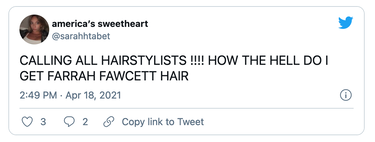 In case you haven’t heard (or seen on any of your feeds), the 70s are back, baby. We’ve seen wide-legged pants in every shade of corduroy, a full-fledged roller-skate renaissance, and enough frosty eye shadow to ice a cake—but nothing quite says 70s like some lush, fluffy, Farrah Fawcett-style curls. The trend is, of course, inspired by the blonde bombshell’s signature swoopy hairstyle, seen in decade-defining media like Charlie’s Angels (not to mention her iconic red swimsuit poster, which is the best-selling poster of all time). Already taking over TikTok, the style is youthful, perfectly bouncy, and easy enough for anyone to achieve. And to make sure of that, we tapped Mischa G, top hairstylist and owner of Treehouse Social Club (and purveyor of all retro haircuts), to share her step-by-step advice for nailing the look, including her dos, don’ts, and product suggestions. The Trend The style’s signature lies in the curl pattern, volume, and flirtatious pieces that frame the face. Farrah Fawcett's feathered cut became a hallmark of the '70s, forever memorializing the decade, which then spun off into subsequent '80s and '90s versions. Fawcett personally credits legendary French stylist José Eber with first feathering her hair (though several other stylists have since claimed they were the ones to debut the cut). The feathered hair craze has been compared to Jennifer Aniston's viral "Rachel" cut—a seemingly casual but also striking hairstyle made popular by actresses with girl-next-door appeal. Really, much of the Farrah cut's charm is its movement. As Mischa points out, this style is intended to flow, whether on a disco dance floor, skating down the pier, or just walking the city streets. It's casual and vaguely athletic but undeniably pretty. After more than a year of frantic pre-Zoom dry shampoos and homebody ponytails, the freedom of literally letting our hair down is just what we need. And, of course, "The Farrah" fits in perfectly with a much wider '70s revival. We chronicled the resurgence of shags and afros, earth-toned manicures, and glittery makeup. Plus, pea green and orange velvet furniture are finding their way into modern apartments. And, who could forget "Dreams" by Fleetwood Mac going viral and reappearing on the Hot 100 last year for the first time this century? The Trendsetters In a welcome role reversal, it looks like celebrities are now taking many of their style cues from Internet trends instead of the other way around. As "The Farrah" takes off, we’ve seen the style on everyone from Ciara and Saweetie to Hailee Steinfeld and Lizzo. The hashtag #farrahfawcetthair has nearly 15,000 uploads to Instagram, countless Twitter mentions, and a staggering number of TikTok videos. This trend is quickly approaching critical mass—in other words, there’s never been a better time to try it out for yourself. Much of the attention on this style is thanks to TikTok user @Groovy_Mal who uploaded her highly duet-able curl transformation last year. Almost immediately, scores of other uses with all hair types, colors, and lengths started trying her tutorial, uploading their results next to hers. Much of the trend's popularity is due to just how easy it actually is to pull off. According to Mischa, the only real prerequisite for the Farrah is a compatible cut. Get The Look As with any retro look, half the fun is sourcing your inspiration. Diving into the #farrahfawcetthair tag is a great place to start. It's full of photos of inspo from Farrah herself, people's own modern interpretation, and even lots of vintage shots of parents and grandparents wearing the style back in the day. "Chat with your mom, favorite aunt, and grandma and see if they have any old pictures or beauty products to flip through and experiment," Mischa suggests. From there, it's time to assess the current state of your cut and see if it works for this style. According to Mischa, the shag-and-layered version of the Farrah works best on those with lots of layers already. "The shorter the face-framing, the better the style," she adds. "This is not for people with extra-long hair and minimal layering." Before styling, Mischa recommends taking a few minutes to lay some product groundwork to guarantee grip and hold, both key for big, curl-focused styles. "I suggest using a styling product to build structure in the hair," she says. Finally, it's time for the styling to begin. To get your own Farrah, hot rollers or a velcro approximation are a must, Mischa says. She advises the following two methods: Hot Roller Method
Velcro Roller Method
If you're styling a wig, particularly a synthetic one, Mischa suggests using a slightly different type of roller:
Get The Products Mischa laments the discontinuation of Farrah's own famous heat styler, the Schick Speed Styler, for which she did popular commercials featuring her feathered cut. "If the blow-dry brush that Farrah actually used in the commercial still were made now, that would be my number one choice," she tells us. Luckily, you're still good with a small-to-medium round brush and quality blow dryer. "For brushes, I would use something medium-sized and one that doesn't pull too much (light tension)," she explains. For hair that's already straight and smooth, she recommends a metal brush like the Harry Josh Magnesium Thermal Brush 1.7 Inch ($55). "If your hair is thicker and needs to be smoothed while adding bounce and fluff, I would use a boar bristle brush like the Spornette 856 Italian," Mischa says. We all know styling products are critical, and Mischa is a fan of Leonor Greyl's soft, volume-building mousse and heat-protecting Cult + King Setspray ($35), which doubles as a hairspray. Above all else, Mischa recommends never taking any of it too seriously. "Have some fun with you hair and flip it out all sorts of ways!" she encourages. "It's meant to last for days! It looks and feels amazing while bouncing to every disco track!" With a few rollers and a little patience, we can all be dancing queens this spring. from Byrdie
Bold and rebellious, female mullet has grown to be one of the biggest hair trends of this year. Clearly nonconformist, yet practical, it is now seen everywhere, from a schoolyard to the red carpet. Once the celebrities known for their prominent hairstyles like Rihanna and Miley Cyrus took up the trend, it became clear that the girl mullet would be a big thing now. If you dare to try it too, here are the styling tips you will definitely need. A Brief History of a Mullet Haircut The mullet haircut goes back on time to prehistoric people when they realized how practical it was to cut the fringe to keep the hair out of their faces while keeping the length at their back to keep the neck warm and protected from the rain. It wasn’t until the ‘70s when the haircut got really popular, with Rockstar David Bowie making the lead with the amazing orange mullet we all remember. The ’80s was the golden age of the mullet; the haircut was an absolute trend and loved by most people considering it cool and fashionable. In the ’90s the trend started to fizzle. People who once proudly flicked their mullet to the wind started to cut off their “rattails” and soon the haircut was considered an embarrassment for the world. After a few years of trying to make its way back, the mullet haircut has adapted to the 21st century so that everyone can ROCK this fantastic haircut. This time around, more women are wearing the haircut, making it super stylish and giving it a sophistication it’s never had before. The mullet… it’s here, and this time it’s here to stay! How to Style a Modern Mullet I’m going to share with you female mullet ideas along with tips for easy and efficient styling to step your haircut up a notch. You’ll need to use some products to help you through, so I’ll mention some of my faves; still, you can always replace those with any products you love.  #1: Glam It Up Modern mullet can be styled sleek and elegant. To achieve this look, apply some leave-in in conditioner and heat protection on the damp hair. My fave is Unite 7seconds Detangler. Comb the hair into place and blow dry using your fingertips to mold the hair into shape. Use Unite Second Day hair wax to get rid of flyaway, smooth down the back of your mullet and finish off the look.  #2: Cropped Mullet The style, which is so flattering on Úrsula Corberó, is all about the haircut. The top is cut like a pixie, but we have the length at the back, making this mullet super cool. For sure, one of my favorite looks. To achieve this look simply apply a leave-in conditioner and comb it through. Blow dry with your hands creating texture, then add Sacha Juan hair wax to create a definition.  #3: Punk Mullet See how Úrsula took her mullet game to the next level and stepped it up to this amazing red carpet look. To create this look, apply Unite Hair Blow & Set Lotion to add body and hold. Blow dry the hair with a round brush to create volume. Use your styler to create some wavy texture on top and dress it forward using some hair wax. Grab a comb, apply some hair gel on the teeth, and gel the sides of the mullet backward. With your hairdryer at medium heat and speed, dry the gelled sides to keep them in place  #4: Beach Mullet Sophie Thatcher looks great with this shaggy blonde mullet, and you can copy the look too. With your hair damp, apply a detangler and comb your hair through. Use Sacha Juan Ocean Mist salt spray to add texture and medium hold. Create waves in multiple directions using a styler, but always pointing the plates down your styler to not lose any length. Apply texturizer spray and break the waves with your fingers to finish off the look.  #5: Wet Look Kesha’s wet mullet look is another hairstyle you can lose your heart to. After you remove excess moisture from your hair, apply a fair amount of gel on the top section and scrunch the rest into the ends. Dress the hair into place and use a diffuser to dry. You can add glossing spray to exaggerate that shiny wet look we’re looking for.  #6: Sleek & Straight With your hair damp, apply Unite Lazer Straight (it already contains thermal protection, most Unite products do). Blow dry your hair using your favorite brush. Use your styler to straighten down your hair and achieve a sleek smooth look. To finish off the look, massage some hair serum into the palm of your hands and apply to avoid flyways and add shine.  #7: Girl Mullet with Flicked Ends To create this look, apply Unite 7seconds Detangler and comb it through. Use a volumizing spray overall, I love using Unite Boosta for this job. Blow dry the hair with your hands, creating volume. Use your favorite styler to flick the back ends of your mullet upwards. Add some hairspray to hold the style.  #8: Curly Mullet You can achieve this look with two different technics, depending on your hair type. If you have straight hair, use a hair mousse to add some hold and blow dry your hair to dry the mousse in. Then, use the chopstick styler no.1 curling wand. Take 2cm sections, wrapping the hair around the wand. To finish off the look, massage Unite U Oil into the palms of your hands and scrunch into the hair to break the curls. If you have naturally curly hair, start by applying your favorite curly girl-friendly styling product. I love Naughty haircare Wave Hello Curl Taming Cream. Comb the hair through with a Denman D3 styling brush and twist your brush to create the perfect curls. Use a diffuser to dry your hair, using low or medium heat to avoid frizz. Then, massage Unite U Oil into the palms of your hands and scrunch into the hair to break the curls.  #9: Effortless and Textured Do you want to make your hair look thicker? Apply heat protection, then use Unite Liquid Volume to add texture and hold and blow dry your hair with your hands. Use a texturizing spray to add body. Finish the look with a hair wax dressing the sideburns into shape.  #10: Long Mullet This longer mullet style often resembles a shag haircut. To achieve this look, add salt spray into your hair. Dry with the product in, using your hands to create texture. Grab random pieces of your hair and wave them with a styler to create an undone beachy look. Then break the waves with your fingers. 4/29/2021 0 Comments The Story of Hair: The One Where Jennifer Aniston's 'Rachel' Haircut on Friends Became a PhenomenonThe legacy of NBC's Friends isn't one of ratings records or piles of awards—it's about the way the show managed to impact popular culture by showing life at its most mundane. This is a series that turned sipping coffee into an art form, still prompts philosophical debates over the morality of being "on a break," and made it impossible not to shout pivot! when moving furniture. But Friends reached its cultural zenith when it managed to transform a simple hairstyle into a global talking point, as untold millions of women in the ‘90s flocked to salons all wanting one thing: “The Rachel.” “The Rachel” hairstyle, which was the creation of stylist Chris McMillan, was first worn by Jennifer Aniston’s Friends character Rachel Green in the April 1995 episode “The One With the Evil Orthodontist." It has its roots as a shag cut, layered and highlighted to TV perfection. It may have been a bit too Hollywood-looking for a twenty-something working for tips, but it fit in the world of Friends, where spacious Manhattan apartments could easily be afforded by waitresses and struggling actors. The Birth of "The Rachel" Aniston in 1996, during the height of the style. The style itself wasn’t designed to grab headlines; McMillan simply gave Aniston this new look to be “a bit different,” as he later told The Telegraph. In hindsight, the ingredients for a style trend were all there: The cut was seen on the show’s breakout star as the series hit its ratings peak; an average of more than 25 million viewers tuned in each week during Friends's first three seasons. You can’t have that many eyeballs on you without fans wanting to get closer to you, and the easiest way to do that is to copy your style. During the show’s second and third seasons in the mid-1990s, stories began to appear in newspapers and magazines about salons from Los Angeles to New York City and (literally) everywhere in-between being inundated with requests for Aniston's haircut. Some women would come in with their copy of TV Guide in hand for reference; others would record an episode of the show and play it at the salon to ensure accuracy. For these stylists, a good hair day for Rachel on a Thursday night meant big business over the weekend. "That show has made us a bunch of money," Lisa Pressley, an Alabama hairstylist, said back in 1996. Pressley was giving around four "Rachels" per week to women ages 13 to 30, and she was touching up even more than that. Another hairdresser estimated that, during that time, 40 percent of her business from female clients came from the "Rachel." During the early days of the trend, McMillan even had people flying to his Los Angeles salon to get the hairdo from the man himself—a service that he charged a modest $60 for at the time. A Finicky 'Do What many clients learned, though, was that unless you had a trained stylist at your side, “The Rachel” required some real maintenance. "People don't realize the style is set by her hairdresser," stylist Trevor Tobin told The Kansas City Star in 1995. “She doesn't just wake up, blow it dry, and it just turns out like that." That was a warning Aniston knew all too well. In recent years, she has expressed her frustration at not being able to do the style on her own; to get it just right, she needed McMillan on hand to go through painstaking styling before shoots. In addition to being impossible to maintain, in a 2011 Allure interview, Aniston called it the “ugliest haircut I've ever seen." In 2015, the actress told Glamour that she found the look itself “cringey." Though Aniston had grown to loathe the look, it was soon the 1990s' go-to style for other stars like Meg Ryan and Tyra Banks and later adopted by actresses and musicians like Kelly Clarkson and Jessica Alba. Debra Messing had an ill-fated run-in with it when she was told to mimic the style for her role on Will & Grace. They soon realized that trying it without McMillan was a fool’s errand. “[It] was a whole debacle when we tried to do it on the show,” Messing recalled. “They literally tried for three hours to straighten my hair like [Aniston's]. It was so full and poofy that it looked like a mushroom.” A Style That Sticks Around Aniston’s personal preference for longer hair soon made its way on-screen, replacing the shorter, choppier “Rachel” by season 4. The once-iconic look was officially ditched, the last remnants of which were washed away in a flowing sea of ever-growing locks doused in blonde, pin-straight highlights. And once a haircut’s namesake turns their back on the style, it’s likely only a matter of time before the rest of the world moves on, too, right? Wrong. “The Rachel” endured. Unlike Farrah Fawcett’s showstopping feathered hair from the ‘70s, celebrities, news anchors, and the average salon-goer were still wearing the hairstyle well into the 2000s. Even now, fashion websites will run the occasional “Is ‘The Rachel’ Making a Comeback?” article, complete with the latest Hollywood star to sport the familiar shag. It’s a testament to McMillan’s skill, Aniston’s charm, and Friends’s cultural sway over audiences that people are still discussing, and donning, the hairstyle some 25 years later. And in a lot of ways, the haircut's success mimicked the show's: it spawned plenty of imitators, but no one could outdo the original. From MentalFloss
|
Hair by BrianMy name is Brian and I help people confidently take on the world. CategoriesAll Advice Announcement Awards Balayage Barbering Beach Waves Beauty News Book Now Brazilian Treatment Clients Cool Facts COVID 19 Health COVID 19 Update Curlies EGift Card Films Follically Challenged Gossip Grooming Hair Care Haircolor Haircut Hair Facts Hair History Hair Loss Hair Styling Hair Tips Hair Tools Health Health And Safety Healthy Hair Highlights Holidays Humor Mens Hair Men's Long Hair Newsletter Ombre Policies Procedures Press Release Previous Blog Privacy Policy Product Knowledge Product Reviews Promotions Read Your Labels Recommendations Reviews Scalp Health Science Services Smoothing Treatments Social Media Summer Hair Tips Textured Hair Thinning Hair Travel Tips Trending Wellness Womens Hair Archives
July 2025
|
|
Hey...
Your Mom Called! Book today! |
Sunday: 11am-5pm
Monday: 11am-6pm Tuesday: 10am - 6pm Wednesday: 10am - 6pm Thursday: Closed Friday: Closed Saturday: Closed |
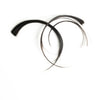






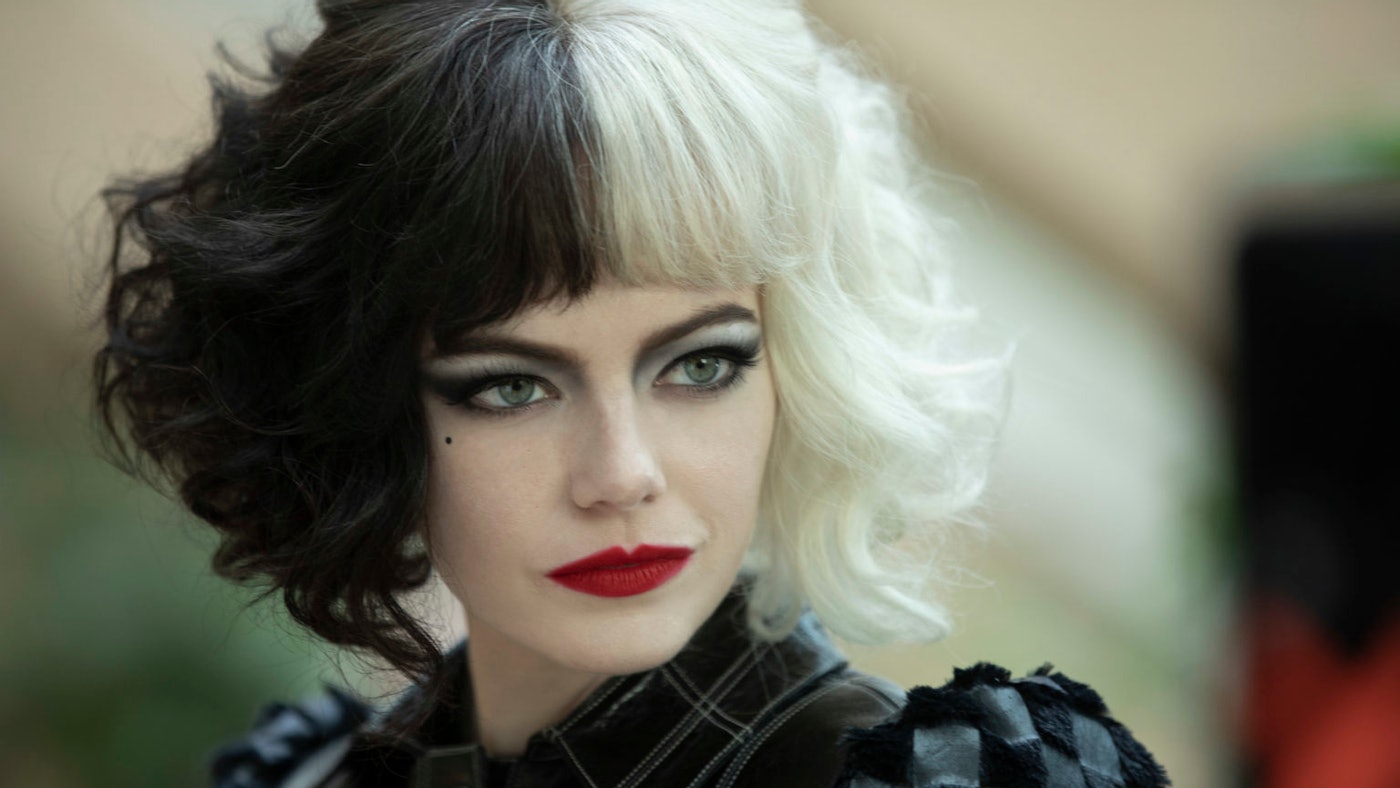
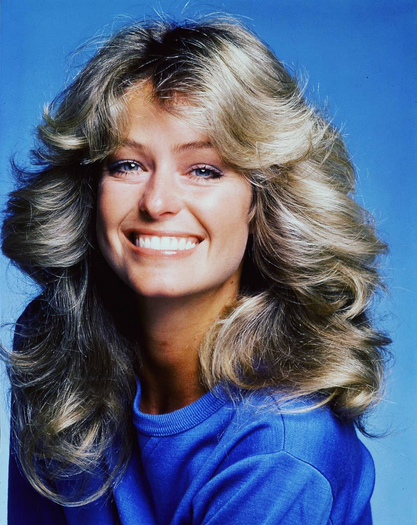
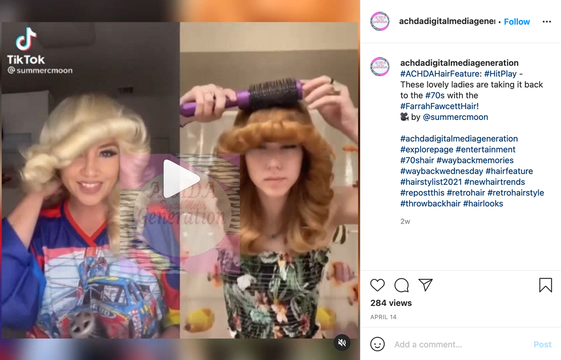

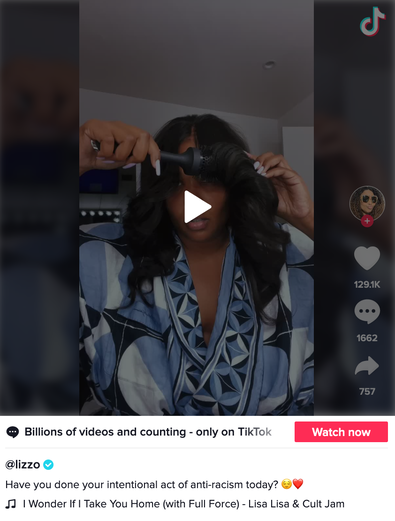

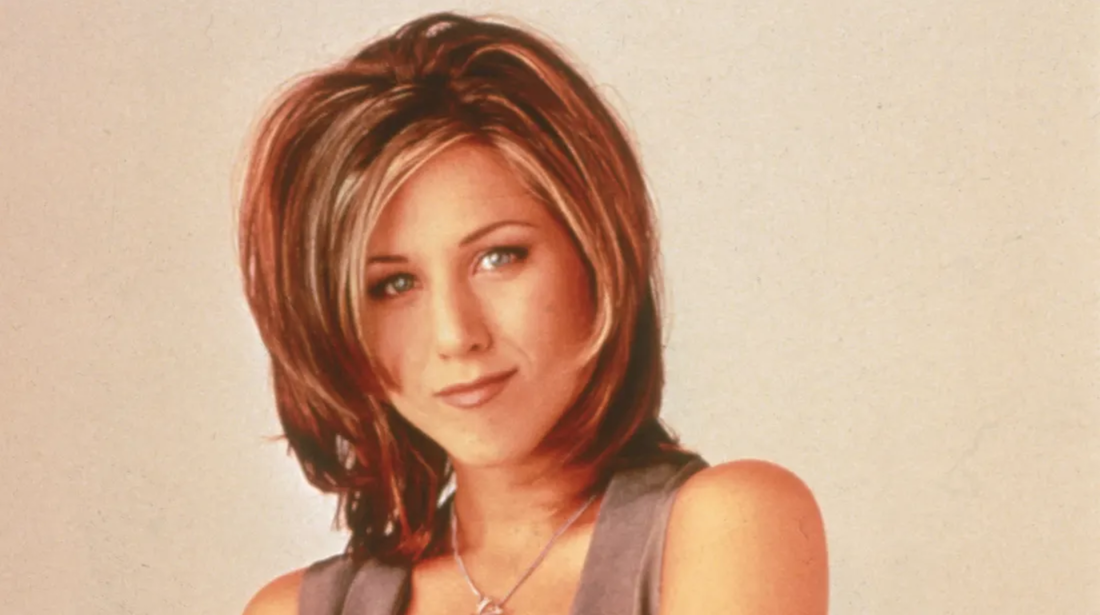

 RSS Feed
RSS Feed